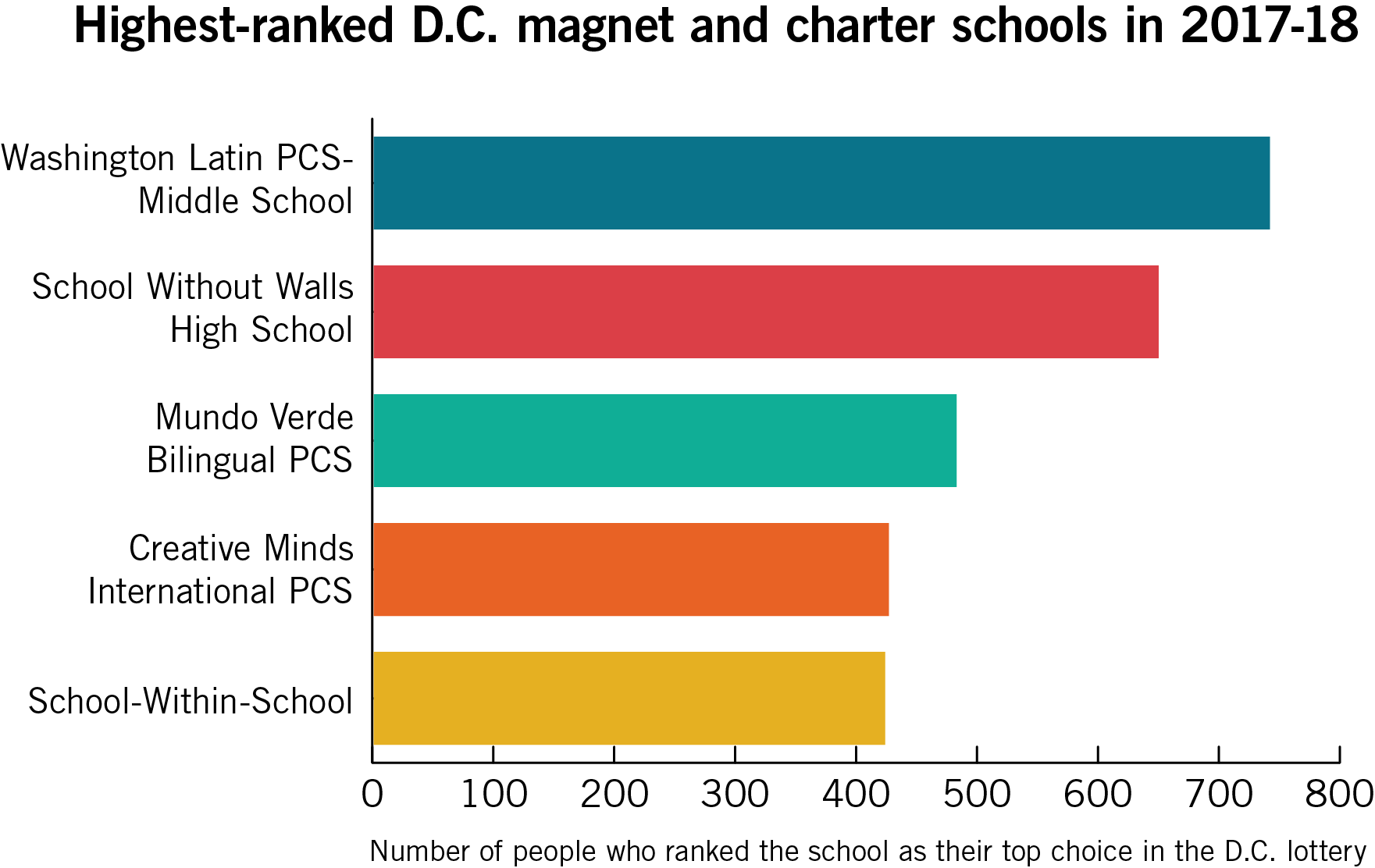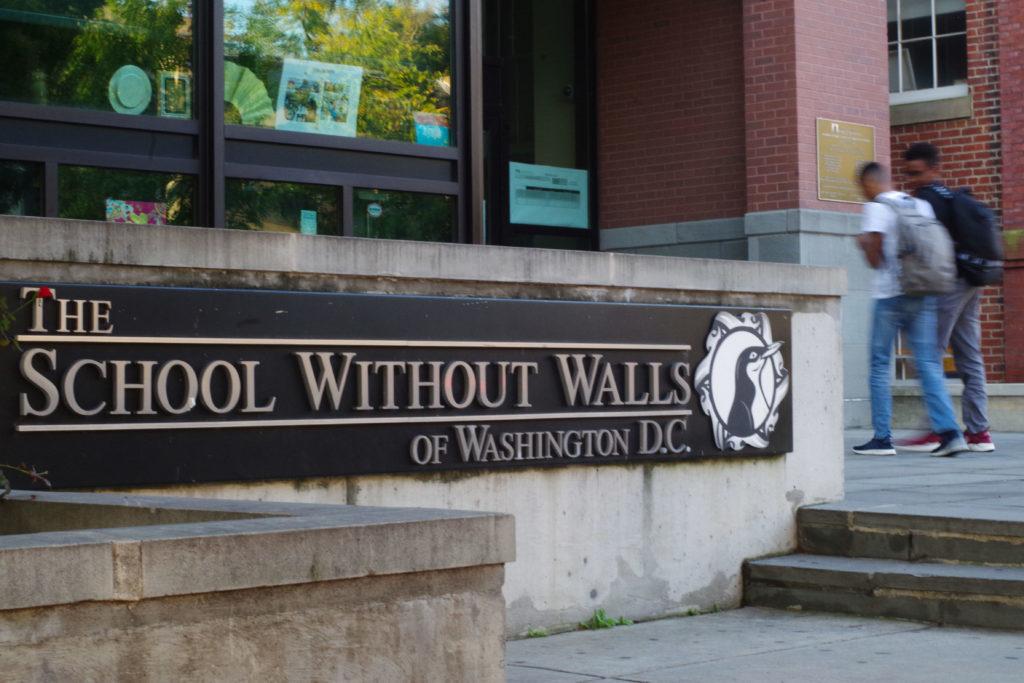The School Without Walls is the most popular magnet or charter public high school in D.C., but its enrollment is expected to remain steady over the next decade, according to an enrollment report released by the D.C. Auditor Friday.
Parents listed the School Without Walls High School as their top choice in the annual My School D.C. Lottery, a common application students use to apply to D.C. charter and magnet schools, in the 2017-18 school year. D.C. public school enrollment is expected to jump by roughly 5,000 students over the next decade, but enrollment at the School Without Walls will only increase by about 100 students, the report states.
About 650 applicants ranked the School Without Walls as their first choice for a high school last year. Overall, the school clocked in as the second-most popular public school in D.C., next to Washington Latin PCS Middle School, according to the report.
The School Without Walls has clinched the top high school title since at least the 2014-15 school year – the earliest data recorded in the report. Washington Latin PCS Middle School also surpassed the school as the top public school in 2016-17 academic year, the report states.

Emily Recko | Graphics Editor
Source: D.C. Enrollment report
Richard Trogisch, the principal of the School Without Walls High School, said the school leads D.C. high schools because of students’ access to Advanced Placement courses, dual-enrollment opportunities at GW, clubs and activities.
“At School Without Walls High School, we are committed to providing students with rigorous and joyful learning experiences that allow them to reach their full potential, and we are always striving to better meet the needs of our students,” he said in an email.
The School Without Walls fulfills four of the five “parent demand factors” listed in the report, detailing what aspects parents consider when deciding where to send their children to school – like selective admissions, high standardized test scores and racial diversity.
The study predicts that the School Without Walls’ student population will increase from 592 to 687 students in the next 10 years. D.C. school populations will increase from 12,000 to 17,000 students over the same period, according to the report.
“We will continue to work together as a school district and a city to ensure we meet the needs of every student,” Trogisch said.
Erin Roth, a spokeswoman for the D.C. Auditor office, said the study took nine months to complete and includes an interactive web tool to display statistics from the study. Roth said D.C. schools should conduct enrollment projection studies and share them with the public annually to enhance their transparency about enrollment projections and historical data on students.
“D.C. has a very active educational community,” she said. “We’re hoping this will be just as useful for parents as well as policy-makers and education practitioners.”
The D.C. Auditor’s office hired three educational consultant firms – Cooperative Strategies, the Urban Institute and 21st Century School Fund – to complete the report after D.C. Councilmember Mary Cheh requested the study. Cheh did not return a request for comment.





